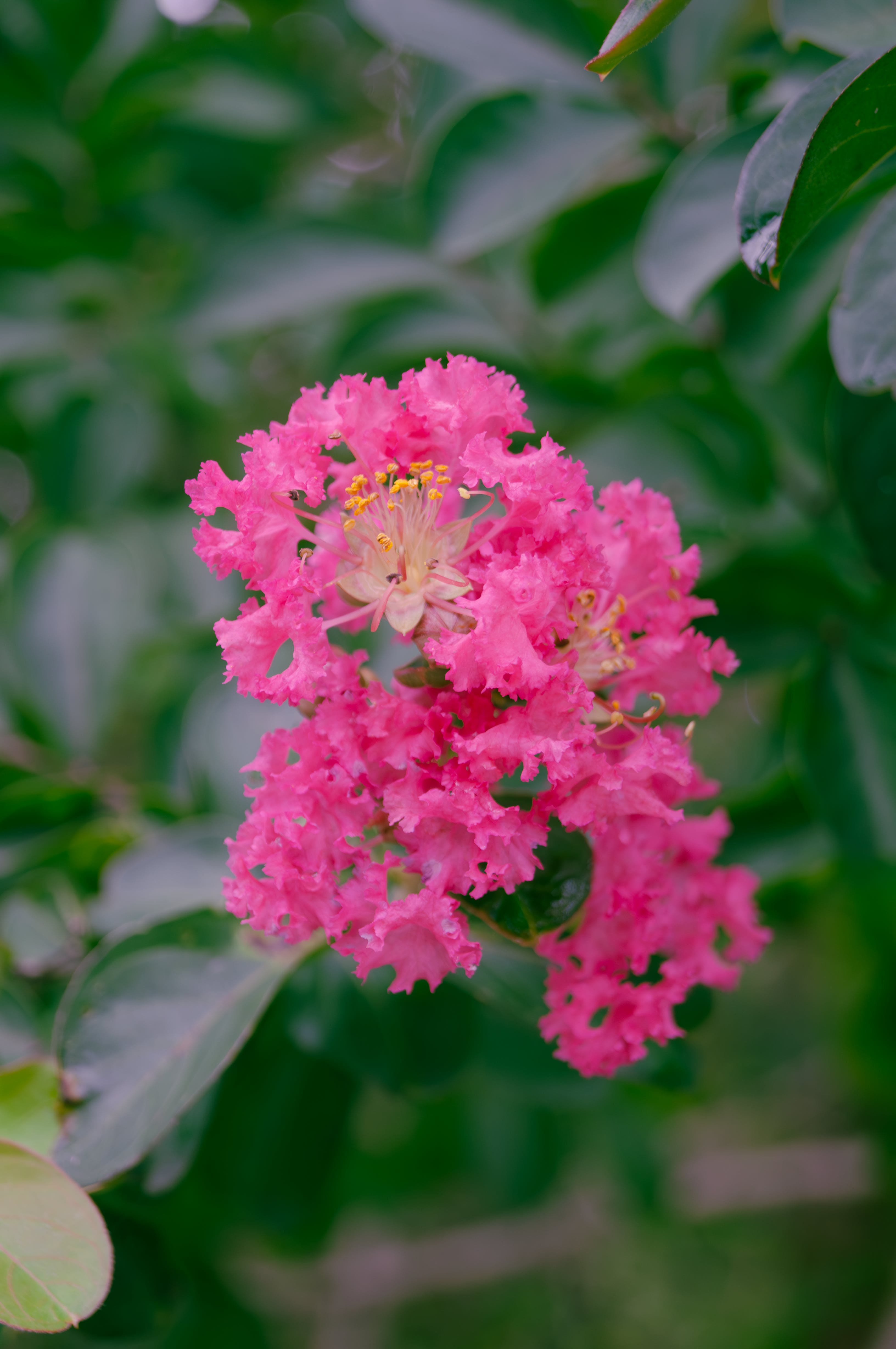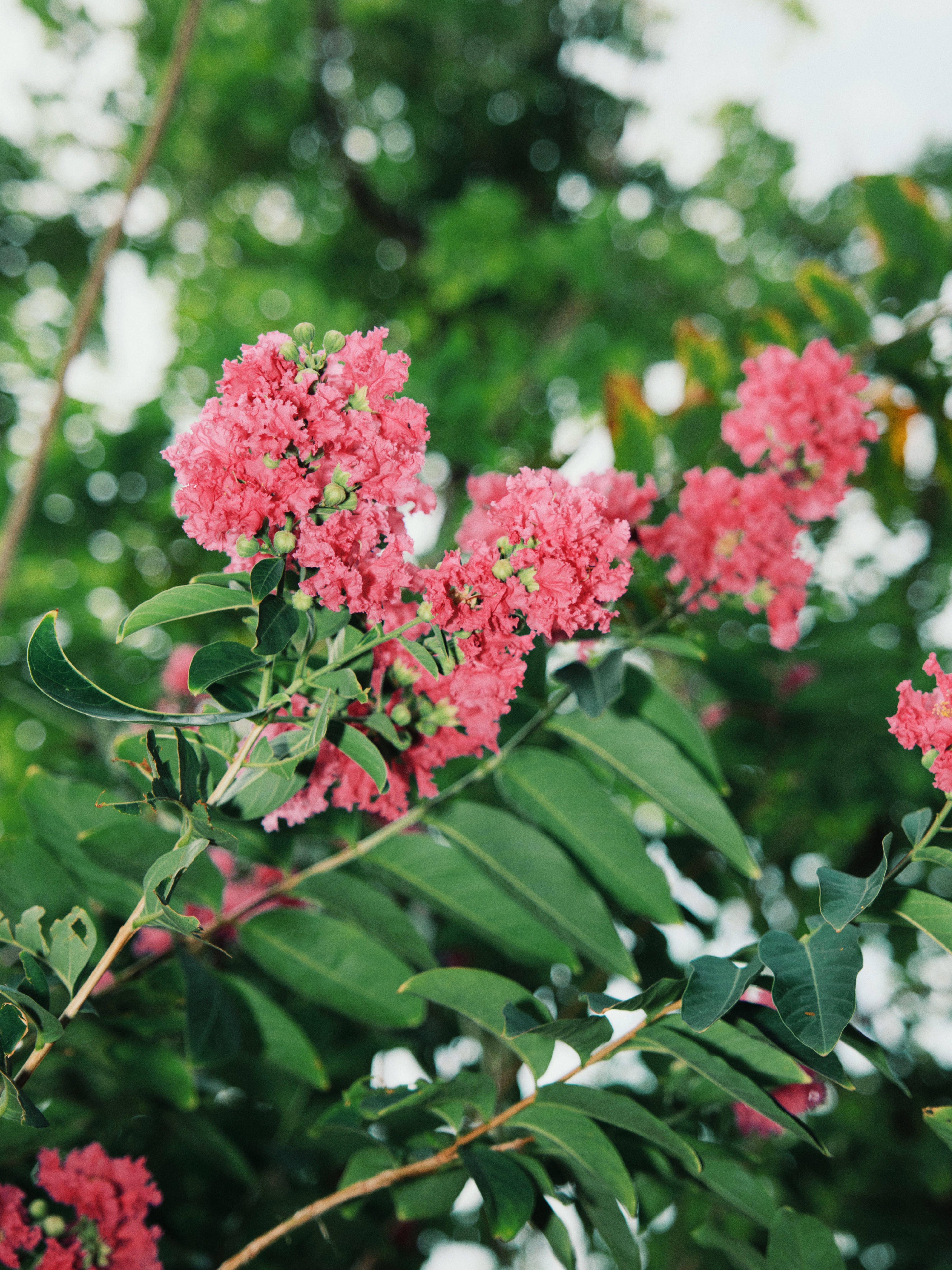Have you recently planted a beautiful crepe myrtle tree in your garden, only to find it withering away? Don’t panic just yet! This blog post will guide you through the possible reasons why your newly planted crepe myrtle might be struggling and give you tips on how to revive it.
Crepe myrtles are stunning flowering trees known for their vibrant blossoms and graceful appearance. However, even with their resilience, they can experience some setbacks when it comes to transplantation and establishment. In this article, we’ll explore common causes such as overwatering, transplant shock, improper planting conditions, and more. Whether you’re a seasoned gardener or just starting out, understanding the signs and taking appropriate action can make all the difference in helping your crepe myrtle thrive.
So, if you’re wondering why your crepe myrtle is looking less than lively, join us as we unravel the mysteries of its decline and provide you with expert advice to promote its health and longevity. Let’s dive in and bring your crepe myrtle back to life!

What Does Overwatered Crepe Myrtle Look Like?

Why is my newly planted crepe myrtle dying
If you recently added a crepe myrtle to your garden, the last thing you want is for it to wither away like last year’s leftover pumpkin spice latte. But fear not, dear plant parent! We’re here to shed some light on why your darling crepe myrtle may be giving up the ghost. So, grab a cup of herbal tea, put on your detective hat, and let’s get to the root of this perplexing foliage conundrum.
1. Improper watering techniques
Let’s face it, no one likes to be drowned or left high and dry, and the same goes for your crepe myrtle. Overwatering can suffocate the roots and leave your tree gasping for breath. On the other hand, underwatering can leave it parched and gasping for a drink like a desert wanderer in search of an oasis.
2. Inadequate soil conditions
Just like Goldilocks seeking the perfect porridge, your crepe myrtle wants its soil to be just right. Too sandy, and it becomes a desert island adventure for your tree; too clayey, and it’s stuck in a muddy quagmire. Make sure the soil is well-draining, not too compact, and rich in organic matter to give your crepe myrtle the happy home it deserves.
3. Picky about its planting spot
Imagine being crammed into an uncomfortable, cramped apartment where you have no room to stretch your legs. Well, that’s how your crepe myrtle might feel if it’s planted in a spot that doesn’t suit its preferences. These beauties love basking in the glory of full sunlight, so make sure they have enough room to spread their branches and soak up those golden rays.
4. Attack of the pests
Just like a can of spray-on cheese attracts college students, crepe myrtles are magnets for certain pests. Aphids, spider mites, and powdery mildew can all take a toll on your tree’s health and appearance. Keep an eye out for these pesky creatures and treat them promptly with environmentally friendly methods, so your crepe myrtle can strut its stuff without any unwanted hitchhikers.
5. Too much fertilizer ain’t so fabulous
We all love a good meal, but sometimes, too much of a good thing can be detrimental. Overfertilizing your crepe myrtle can lead to excessive growth, weak branches, and a lack of blooms. Think of it as the equivalent of feeding a bodybuilder an entire cake. Stick to a balanced fertilizer regimen and follow the instructions to keep your tree in tip-top shape.
6. A case of transplant shock
Moving homes can be stressful for anyone, even plants. When you bring home a new crepe myrtle, it may experience a bout of transplant shock as it adjusts to its new surroundings. This can cause wilting and leaf drop. Give your tree some extra TLC during this transition period by ensuring proper watering and providing a little shade to ease its adjustment.
7. Mother Nature’s tantrums
We can all understand being a little moody when the weather doesn’t go our way, and the same goes for your crepe myrtle. Extreme temperatures, heavy winds, or excessive rainfall can take a toll on its delicate disposition. Unfortunately, we can’t control Mother Nature, but we can try to protect our trees by providing a windbreak or covering during severe weather events.
Now that you’re armed with these insights, you can embark on a rescue mission to revive your struggling crepe myrtle. Remember, a little love, care, and a sprinkle of pixie dust can work wonders. So, go forth and give your crepe myrtle the chance to shine like a rockstar in your garden!
FAQ: Why is My Newly Planted Crepe Myrtle Dying
Introduction:
Welcome to our comprehensive FAQ-style guide on the common issues faced by crepe myrtle owners. In this section, we’ll address some frequently asked questions regarding the health and maintenance of newly planted crepe myrtle trees. So, if you’ve noticed your crepe myrtle struggling or showing signs of distress, this FAQ is here to help you get to the root of the problem and revive your stunning tree in no time!
What Does an Overwatered Crepe Myrtle Look Like
Overindulging your beautiful crepe myrtle with too much water can have severe consequences. As it turns out, these fantastic plants prefer a sip rather than a swim. If your crepe myrtle looks excessively droopy, with leaves that are wilting and yellowing, it’s a telltale sign of water trouble! So, don’t be too generous with that watering can—nature knows best.
What Does Transplant Shock Look Like
Imagine being uprooted from your comfortable surroundings and dropped into an unfamiliar place—yeah, it’s not pleasant. The same goes for your crepe myrtle. Transplant shock occurs when a tree is moved, disturbing its root system. If your crepe myrtle is showing signs of transplant shock, it might appear weak, with wilted leaves and a general lackluster appearance. Don’t worry, though; with the right care and attention, your tree will bounce back!
Where Is the Best Place to Plant Crepe Myrtles
Location, location, location! Crepe myrtles crave sunlight like a beachgoer yearns for a tan. They thrive in full sun, so be sure to find a sunny spot in your garden where your tree can soak up those golden rays to its heart’s content. Trust us, your crepe myrtle will thank you with a stunning display of blossoms!
Is My Crepe Myrtle Still Alive
Before you throw a funeral for your crepe myrtle, let’s perform a quick life check. Start by gently scratching the bark—don’t worry, your tree won’t feel a thing! If you notice green tissue underneath, congratulations, your crepe myrtle is alive and kickin’! However, if all you see is dry, brown wood, it may be time to channel your inner gardener and nurse it back to health.
Can You Use Miracle-Gro on Crepe Myrtle
Ah, Miracle-Gro, the magic potion for plants! While this popular fertilizer can work wonders, be cautious when using it on your crepe myrtle. Too much of a good thing can turn into a disaster. Opt for a well-balanced, slow-release fertilizer specifically formulated for trees and shrubs, follow the instructions on the label, and avoid overdoing it. Remember, moderation is key!
Do Crepe Myrtles Need Full Sun
Absolutely! Crepe myrtles are sun-worshipers—think of them as the beach bums of the tree world! They flourish in full sun, soaking up those rays to produce an explosion of vibrant flowers. So, when choosing a spot for your crepe myrtle, don’t settle for anything less than a sunny paradise!
How Do You Save a Dying Newly Planted Tree
Saving a dying tree requires a little TLC and detective work. Start by checking the soil moisture—it should be moist but not soggy. If you suspect overwatering, adjust your watering schedule accordingly. But also keep in mind that underwatering can be a culprit. So, strike a balance and ensure your tree gets just the right amount of hydration. Lastly, inspect the roots for any signs of damage or disease. If all else fails, consult a professional arborist to lend a helping hand.
Can You Overwater a Newly Planted Tree
Oh yes, you can drown your poor little tree with too much love—in the form of water, of course. Overwatering can lead to suffocating roots, eventually causing your tree’s demise. Remember, it’s better to underwater than to overwater. So, resist the temptation to be an overzealous waterer, and give your newly planted tree some breathing room.
Is It Normal for Plants to Wilt After Transplanting
Moving can be tough on anyone, even plants! It’s perfectly normal for newly transplanted trees, including crepe myrtles, to experience a bit of a slump. They might appear wilted, with droopy leaves and a lack of vigor. However, with a little patience and care, your brave tree will recover and stand tall in its new home—just like a hero settling into a new city!
How Often Do You Water Newly Planted Plants
Watering your newly planted crepe myrtle is a delicate balancing act. While it’s essential to keep the root ball sufficiently moist, you don’t want to create a soggy mess. As a general guideline, water your young tree deeply once or twice a week during the first growing season. Adjust the frequency based on rainfall and the moisture levels in the soil. Your crepe myrtle will appreciate just the right amount of hydration!
When Should Crepe Myrtles Be Planted
Timing is everything when it comes to planting crepe myrtles. The ideal time for planting is in late winter or early spring, before the growing season kicks into high gear. This gives your tree ample time to establish its roots and settle comfortably before the scorching summer heat arrives. Remember, a happy tree starts with a well-timed move!
Continue reading the rest of this article on our website for more helpful FAQs and tips to ensure your newly planted crepe myrtle flourishes and becomes the star of your garden!
Happy gardening! 🌸🌳